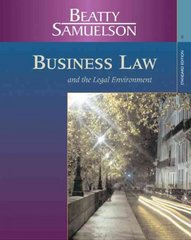Question
hi can i please get some help in how to write examples of real life senarios in the answered questions and can you check if
hi can i please get some help in how to write examples of real life senarios in the answered questions and can you check if i have correctly answered the question and if anything is missing.
1.Suppose the current inflation rate is higher that the target inflation rate. Would the Central bank increase or decrease the interest rate? In your answer, explain how the Central bank makes this decision and explain the steps involved in changing the interest rate.
Definition:
Inflation: occurs when prices rise over time. The inflation rate is the percentage change in the Consumption Price Index (CPI) over the specified time period.
Interest rate: is the cost of borrowing money
Real interest rate: The percentage increase in the real purchasing power of a financial asset.
Nominal interest rate: The percentage increase in the nominal, or dollar, value of a financial asset.
- Higher interest = higher nominal interest rate
- Real interest rate = nominal interest rate - inflation
The redistribution caused by inflation takes place between borrowers (debtors) and lenders (creditors). The Borrowing/lending contracts specify how much money will be paid back in a given time. The unexpectedly high inflation rates help borrowers at the expense of lenders, because borrowers are able to repay their loans in less valuable dollars. Unexpectedly low inflation rates, in contrast, help lenders and hurt borrowers by forcing borrowers to repay in dollars that are worth more than expected when the loan was made. The lenders would protect themselves from the reduction in real purchasing power caused by inflation by factoring into the nominal interest rate an allowance for the inflation rate. In Australia central bank is called the Reserve Bank of Australia (RBA). The RBA is Australia's central bank, and has two main responsibilities:
1. Maintaining stability of the currency, (maintaining low inflation via monetary policy)
2. Oversight and regulation of financial markets.
Monetary policy is conducted by the RBA directly targeting interest rates. Interest rates are managed by the Central Bank. In sum, a higher real interest rate has both positive and negative effects on saving?a positive effect because it increases the reward for saving and a negative effect because it reduces the amount people need to save each year to reach a given target.
The central bank will increase the interest rate when there is a higher inflation rate than the target inflation. The central bank will increase the interest rate because there is an inverse relationship between inflation and interest rate. Inflation refers to the rate at which prices for goods and services rise and the interest rate is the amount of chargebythe lender to the borrower. When the rate of interest rises, the cost of borrowing rises and leads to a decrease in the investment which reduces aggregate demand and prices level falls as a result.
The Reserve Bank controls the nominal interest rate through open-market operations. The inflation rate changes relatively slowly in the short run, therefore changing the nominal rate tends to change the real rate.
in the short run: the Reserve Bank controls real rates through control of nominal rates and in the long run: the real rates are determined by the supply and demand for saving and investment. ? A rise in interest rates reduces household consumption expenditure through:
1. encouraging households to save more as the reward for saving increases
2. discouraging household spending that would be financed by credit
? A rise in interest rates reduces investment expenditure through:
1. increasing the cost of borrowing, reducing the profitability of investment in capital equipment
2. increasing the cost of mortgages for residential housing
Hence, the Reserve Bank can use changes in the real interest rate to eliminate output gaps and stabilise the economy (multiplier effect)
The central bank can use various steps to change the interest rate such as a change in the reserve ratio and SLR. Central banks manipulate short-term interest rates to affect the rate of inflation in the economy.
2.Explain the effect of an increase in exports on the equilibrium output and inflation in the AD-AS model. Carefully distinguish between the short-run and the long-run equilibrium. Would this affect the potential output? Why/Why not?
The Potential output doesn't change. When the exports increase, aggregate demand rises which increases the prices of the goods, and inflation rises.

Step by Step Solution
There are 3 Steps involved in it
Step: 1

Get Instant Access to Expert-Tailored Solutions
See step-by-step solutions with expert insights and AI powered tools for academic success
Step: 2

Step: 3

Ace Your Homework with AI
Get the answers you need in no time with our AI-driven, step-by-step assistance
Get Started


